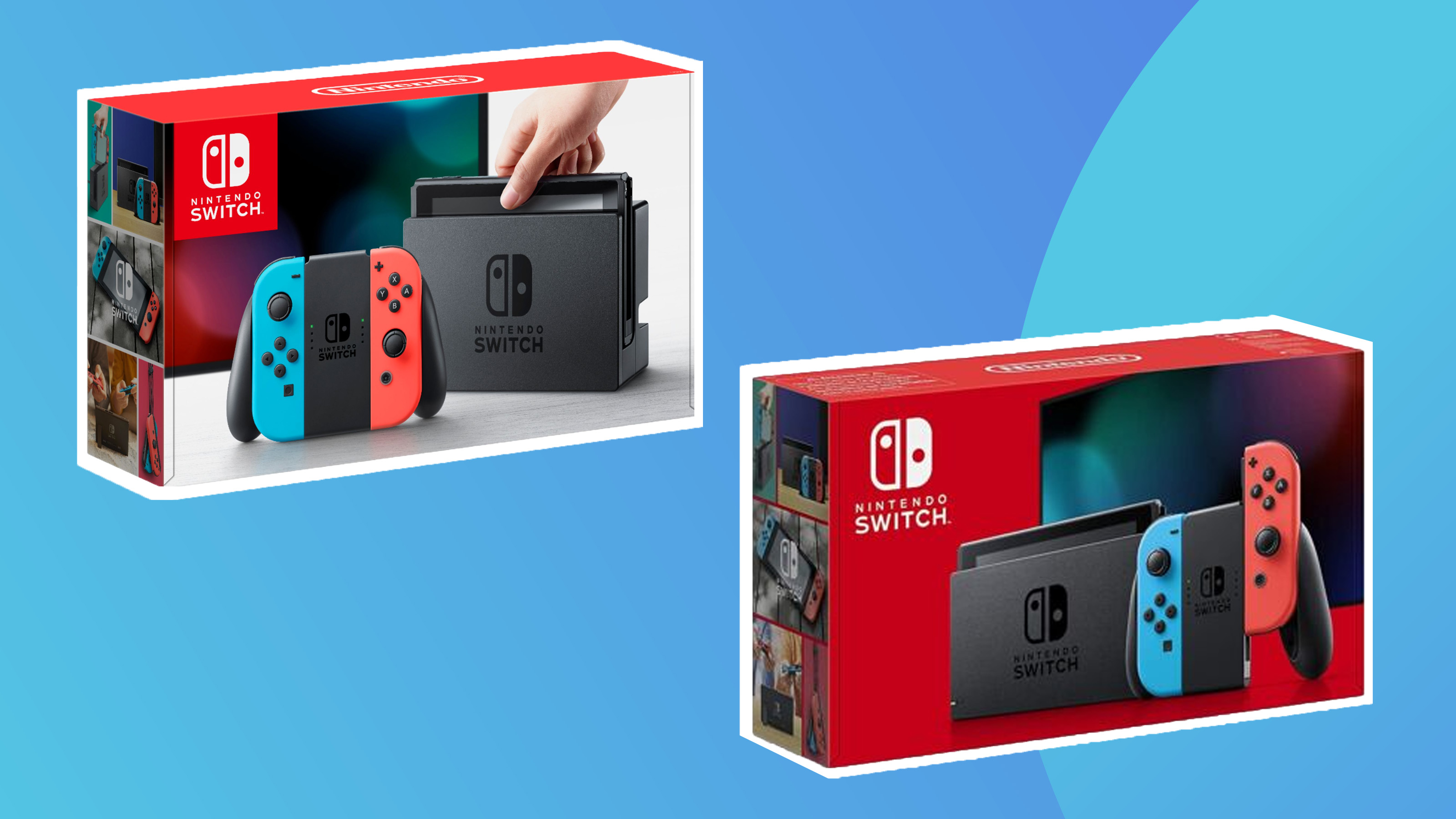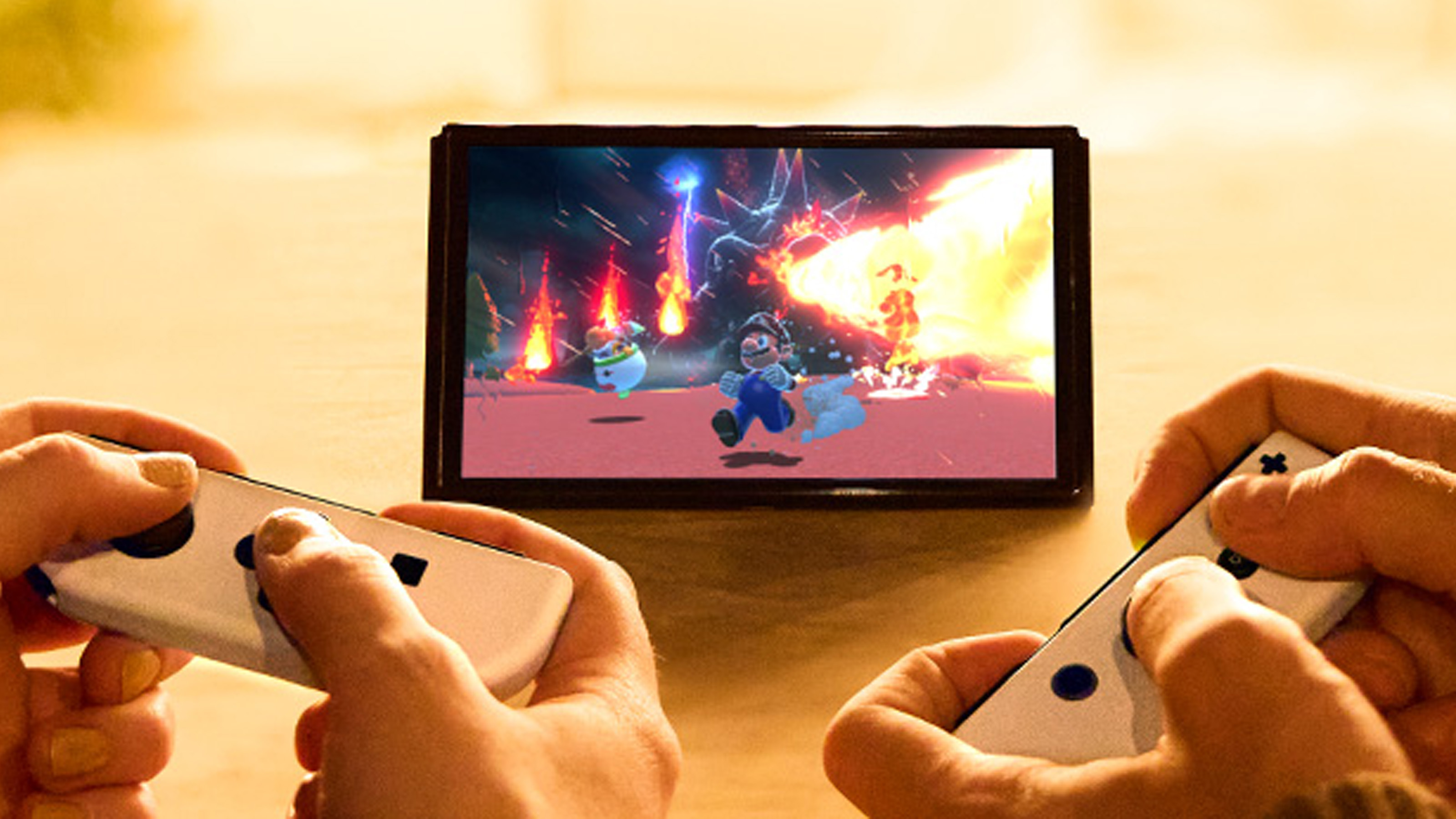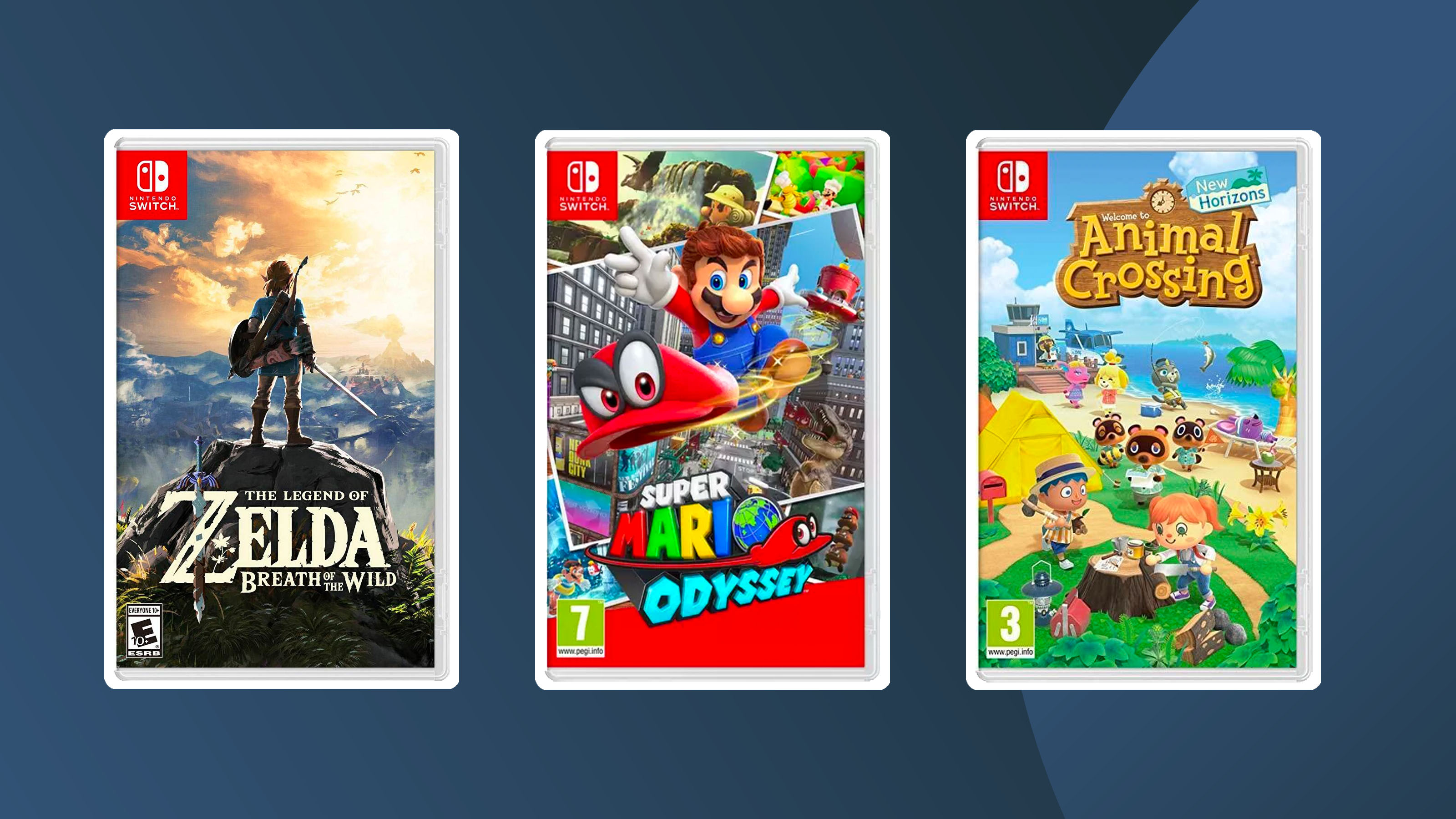Nintendo Switch vs Switch OLED: which should you buy?
Struggling to choose between the Nintendo Switch and the newer OLED? Here are the main differences between consoles.

The Nintendo Switch is one of the most popular consoles to own, ranking in the top five best-selling consoles of all time. Nintendo continue to release plenty of excellent titles and whether you're looking for a fun family game, an epic adventure or a challenging racer, you will be sure to find a game that takes your fancy.
There are currently three main consoles: the original Nintendo Switch, the Nintendo Switch Lite and the Nintendo Switch OLED. The Switch Lite is the most unique of the bunch. It's a smaller, hand-held only version of the console as you can't detach the Joy-Cons or play in TV. The Nintendo Switch and the Nintendo Switch OLED are pretty similar, but there's enough differences that knowing the details is helpful in choosing which console to buy. Released in 2021, the OLED takes the original console and improves it with a larger display, better battery life, improved speakers and a few other sought-after features that the original console was lacking according to fans.
Our below guide will detail the main differences between the Nintendo Switch vs Nintendo Switch OLED if you're looking to purchase one. We will break down each console to help you decide what to buy, and we have also detail the best Nintendo Switch deals in their own handy guide too!
Nintendo Switch vs Switch OLED: design
Visually, the Switch and Switch OLED are nearly identical. Both feature detachable Joy-Cons that clip onto the display, and elements like the volume buttons, power button, card slots and charging ports are all situated in the exact same spots.
Screen dimension is where we find the big difference. The Switch OLED measures 4 x 9.5 x 0.55 inches (102 x 242 x 13.9mm) with Joy-Cons attached, whereas the base Switch measures 4 x 9.4 x 0.55 inches (102mm x 239mm x 13.9mm). The main difference in size is thanks to the screen: Nintendo made the display considerably larger which is a welcome feature that the older model was lacking. As for weight, the OLED model is 0.71 pounds (0.93 with Joy-Cons), and the basic Switch is 0.66 pounds (0.88 with Joy-Cons), so the OLED is a bit heftier weight-wise.
Another notable upgrade is the speakers. The Switch OLED has improved speakers that offer greater clarity and higher volume levels, so your games will sound a lot better than the older model whilst using the internal speakers in handheld mode.
A final important difference that many gamers sought after in the Nintendo Switch is the OLED's improved kickstand. The original kickstand on the Nintendo Switch is notoriously flimsy without much option for adjustment as it could only sit at one viewing angle. The OLED kickstand is the same length as the console itself and is a lot sturdier. It can be angled however you want and overall it's just a massive improvement over the original.

Nintendo Switch vs Switch OLED: display
The display is the main difference between the two consoles. As we stated before, the display sizes vary between the two as the original Switch measures 6.2-inches, where as the OLED measures an impressive 7 inches. A big difference is also the screen type. The Switch has an LCD display, where as the Switch OLED uses, surprisingly, an OLED panel. This shiny new technology improves brightness and contrast as well as offering better power efficiency.
Daily design news, reviews, how-tos and more, as picked by the editors.
Detail wise, both consoles offer the same 1280 x 720 HD displays. When connected to a separate display, both consoles are capable of FHD (1080p) output. An important thing to note is that with the bigger screen on the OLED, games can look a little pixelated up close as they're still the same resolution as the original Switch. Both screens are also touchscreen, which isn't a feature used all that often but it's a good option for navigating the main Switch home screen.

Nintendo Switch vs Switch OLED: battery life
Now, there are technically two different models of the original Nintendo Switch. The HAC-001 is the first iteration that was sold between 2017 and 2019, and Nintendo later made a few small improvements to release the later HAC-001(-01) model. The main difference between these two consoles are the battery lives. The original HAC-001 Switch only lasts around 2.5 - 6.5 hours, where as the newer Switch model (and the OLED) lasts between 4.5 to 9 hours.
To make sure you're buying the right newer model if you opt for the normal Switch, you can tell the difference by the model number as stated above as well as the box: the newer HAC-001(-01) comes in an all-red box as you can see below.

Nintendo Switch vs Switch OLED: controllers
Both the original Switch and the Switch OLED use the removable Joy-Cons as their main controllers. There aren't any differences in the Joy-Cons apart from the colour choice. In general, the normal Switch ships in either grey or neon, where as the OLED comes in white or neon. You can also pick up extra Joy-Cons that have plenty of colour variations and some are even themed after the most popular Nintendo games like Zelda or Splatoon.
The Joy-Cons also support motion control, NFC for use with Nintendo Amiibo figures (on the left controller) and an IR motion camera for controlling specific games (on the right). If removed from the display, they can slot into the Joy-Con grip to make their own traditional-style controller.

Nintendo Switch vs Switch OLED: dock/compatibility
The docks for both the Switch and Switch OLED are very similar. They both feature a USB-C power port, a HDMI port and regular USB port on the back that lives behind the dock. However, the OLED once again improves on it's predecessor. The older Switch dock feels pretty cheap and flimsy, and there's plenty of reports of loose hinges. The Switch OLED dock is made with a higher quality, thicker plastic and has a bit more wiggle room to allow better airflow as well as lessening the chance of scratching your screen when slotting the console into the dock. Another important improvement the OLED dock introduces is an ethernet port for more stable internet while docked, and also removes the flimsy plastic back cover, leaving a plastic lip to tidy your cables with instead.
These docks are compatible with both consoles, and there's also a few third part options available if you want to customise your set up a bit. You can see more in our guide to the best Nintendo Switch docking stations.

Nintendo Switch vs Switch OLED: games
The available library of games is identically vast on the Switch and the Switch OLED. You can take a look at our top picks in our guide to the best Nintendo Switch games.
The only difference is that, because of its larger and brighter display, your games will look better in handheld mode on the Switch OLED than on the original Switch. That's purely because of the display though. Both consoles use the same custom Nvidia Tegra chipset to run the games, so this difference won't be noticeable on the same monitor or TV when docked.

Nintendo Switch vs Switch OLED: storage
If you plan on downloading games a lot onto your future Switch, you should know about the memory differences between the two. The standard Nintendo Switch comes with 32GB of onboard storage, but the Switch OLED has double: 64GB. That's quite a bit more room for saved games, updates and so on.
Fortunately, both consoles can handle up to 2TB of extra storage in the form of microSD cards. You can find the slot for this beneath the kickstand on both models. We have a detailed guide to the best Nintendo Switch SD card if you want to pick one up.
Nintendo Switch vs Switch OLED: price
You can pick up the basic Nintendo Switch for $299/£259. The OLED model costs a little more at $349/£309. You can often find these consoles bundled in with a game or two at various retailers, but it's rare to find the consoles on sale by themselves outside of special sale events like Black Friday.
Should you buy the Nintendo Switch or the Nintendo Switch OLED?
If you're buying a new Switch right now, you're most likely better off going for the Switch OLED. It's got a better inbuilt display, improved speakers, a dock with a LAN port included in the box and double the storage of the base Switch. The only reasons the standard Switch may suit you better is if you want the lightest option of these two consoles, or you want to save a bit of money.
However if you already own a Switch and are eyeing up the Switch OLED, an upgrade is probably not worth it. The display and sound in handheld mode will be better, but you can get its other two chief advantages - the LAN dock and extra storage capacity - as separate accessories without buying a whole new console.
Read more:
- The best Nintendo Switch accessories
- Nintendo Switch Pro: here's everything we know so far
- The best Nintendo Switch Pro Controller prices

Richard is a tech journalist and writer. He is Staff Writer at Tom's Guide and has a passion for smartphones, gaming and audio.
- Abi Le GuilcherFormer ecommerce writer, Creative Bloq
